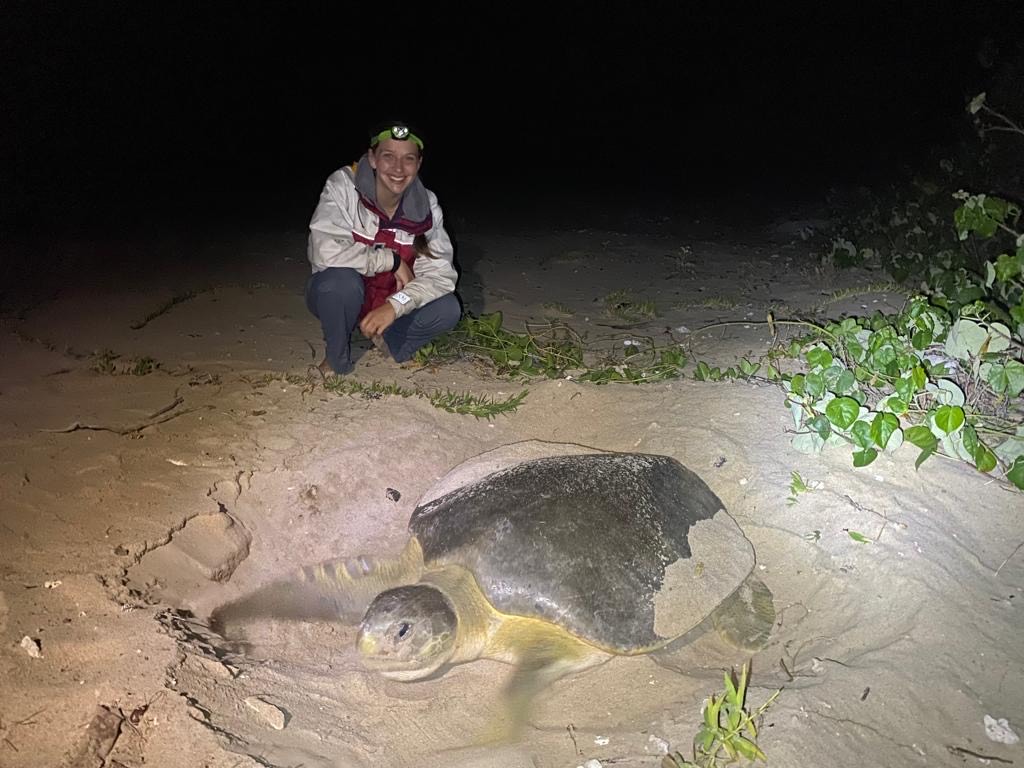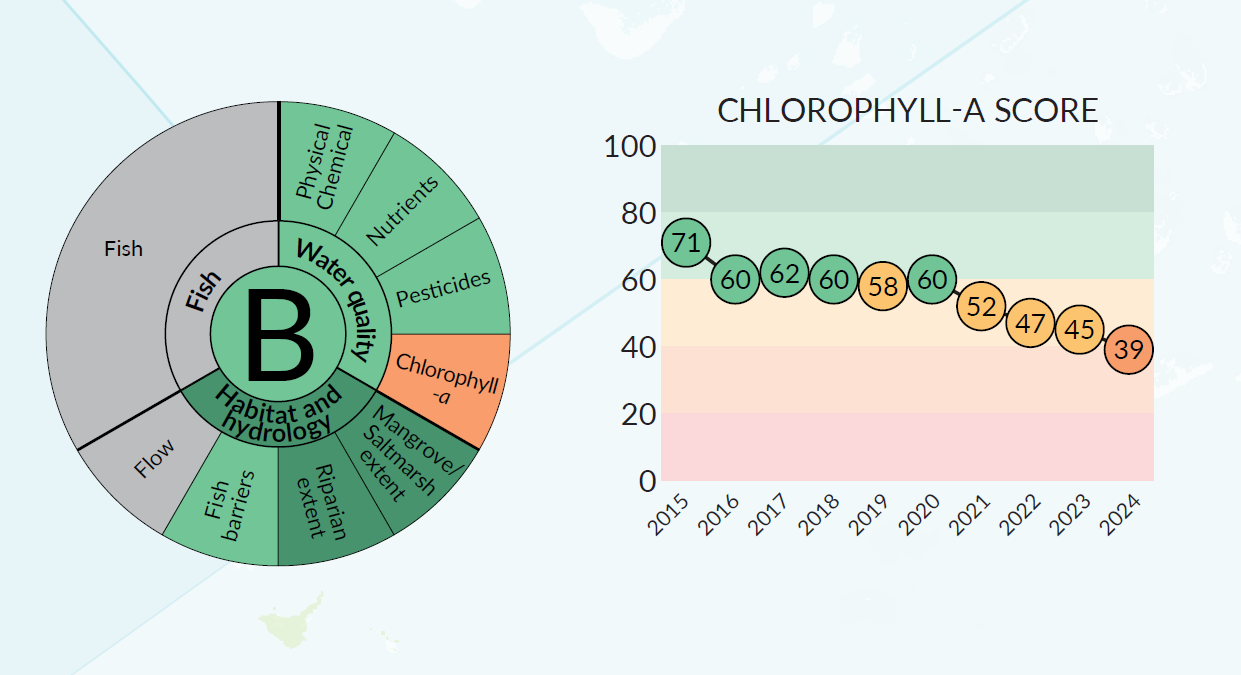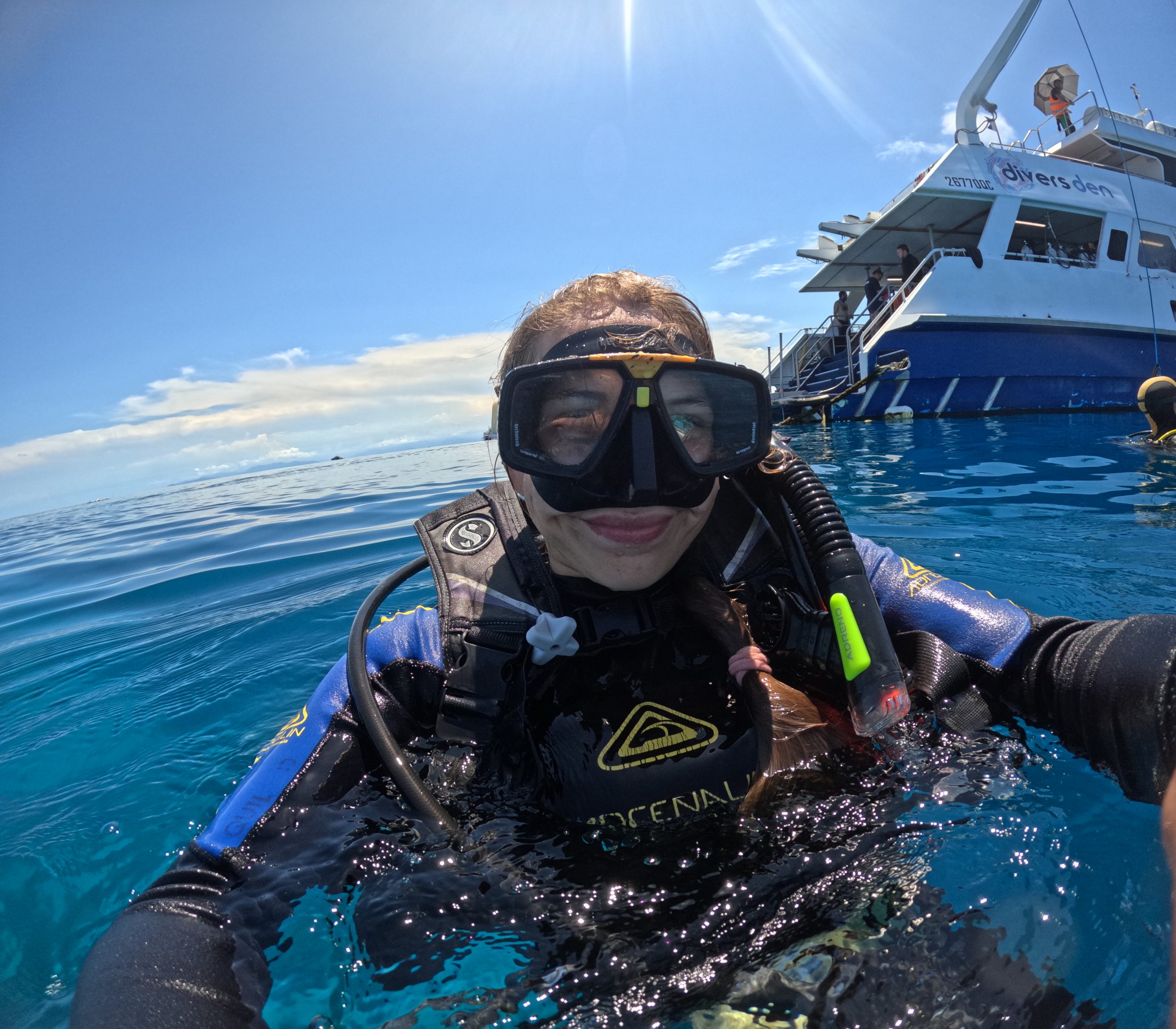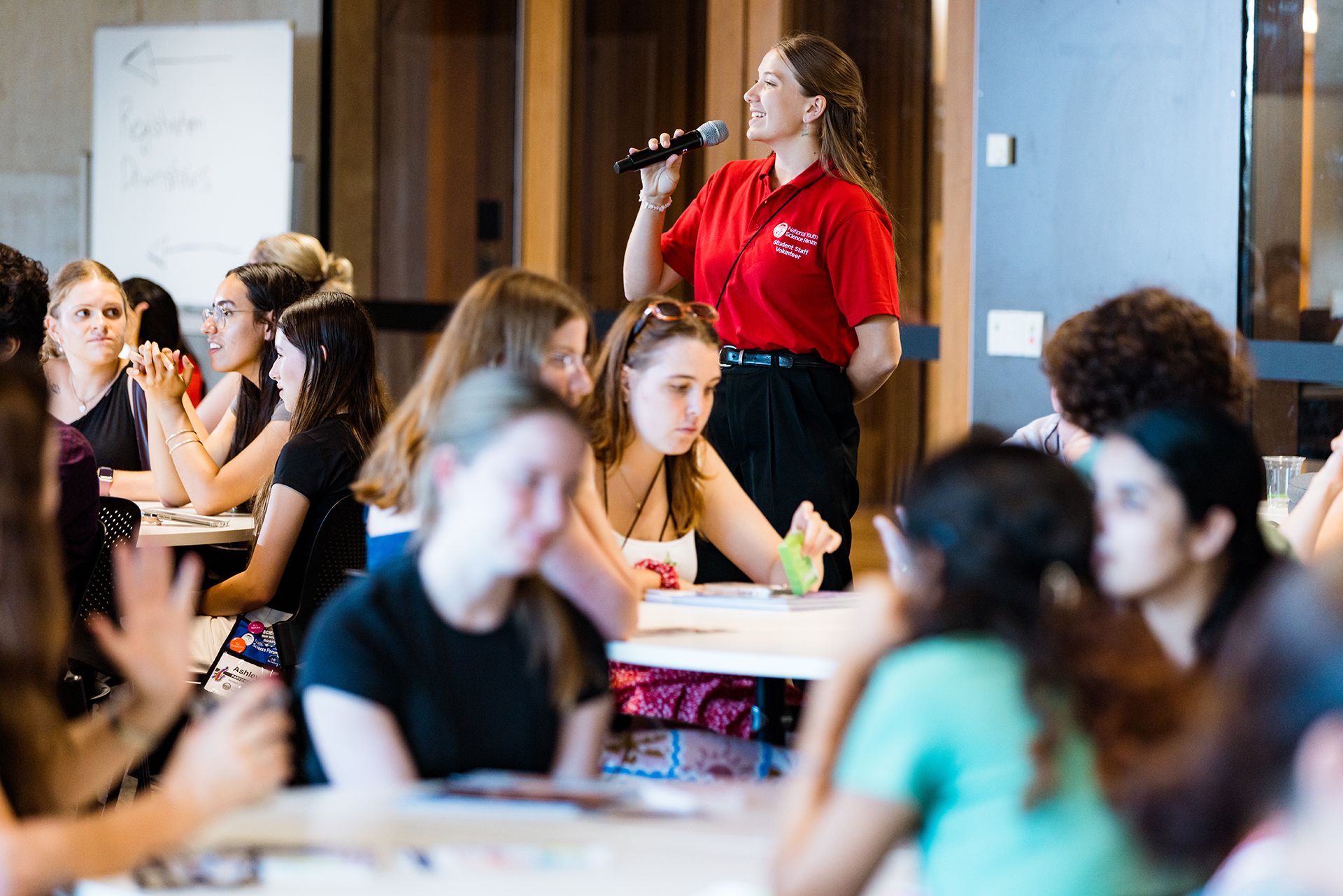Coding for a cause: Aquila has sights set on data to drive positive change
It all started with a moment on the beach. As an eight-year-old, Aquila Fisher held a freshly laid turtle egg and was fascinated by its perfect design. Their shells were soft and malleable, allowing them to fall into the egg chamber, yet, in a matter of hours, they would become so brittle that if the egg was even rotated, the embryo’s breathing connection to the shell could break.
For Aquila, that early spark of environmental wonder and curiosity grew into a purpose-driven career path, ever guided and inspired by her father Steve.
“My dad has been my biggest driver for my choice in environmental science,” Aquila said.
“I grew up with him constantly showing me the beauty of nature, and emphasising its intricate science and vulnerability. Every afternoon after school, we would walk through the rock pools at our local beach and practice reciting all the scientific classes for the molluscs we found!”
Now studying a Bachelor of Advanced Science, majoring in Zoology and Ecology at James Cook University, she’s combining her love for the natural world with her strengths in mathematics and coding.

Working with real-world data
During work experience placement with Healthy Rivers to Reef, Aquila assisted our Senior Technical Officer, Brie Sherow, to interrogate complex data sets, looking for possible explanations for rising chlorophyll-a levels in estuary and marine water quality samples across the Queensland coast.
By focusing on the Gregory River in the Proserpine River Basin – one of the estuaries included in our annual waterway health Report Card – she set about exploring relationships between chlorophyll-a levels and tide characteristics.
Chlorophyll-a is an indicator reported in our estuaries and inshore marine zones. It is a measure of overall phytoplankton biomass, and is widely considered a useful proxy to measure nutrient availability and the productivity of a system.

“My job in this project was to clean and prepare data, align different datasets, and conduct statistical analyses to determine if significant relationships exist within the data using RStudio,” Aquila said.
“I found that being able to directly apply my studies to industry work was very satisfying because it proved that what I am learning in university has a real-world application and I will be able to use the knowledge and skills I am gaining in my future career.”
Healthy Rivers to Reef Senior Technical Officer Brie said it was great to mentor students like Aquilia and provide learning opportunities for data analysis using a real-world context.
“Aquila was a dream to work with. She continuously asked for constructive feedback and was very keen to learn,” Brie said.
“She went above and beyond just writing a statistical analysis. She really thought about what the data meant and how it applied to the environment. I really appreciated her curiosity and her ability to ask questions of the data that we were working with.”
From gathering data, to making it count
Growing up in the Mackay region, Aquila was often found with her feet in either the water, sand or dirt – and set about building her environmental science career from an early age.
While still at high school, Aquilla took part in overnight expeditions conducting research on the Brindled-Nail-Tailed Wallaby, where her duties involved trapping, microchipping, biopsies and recording data. While also at school, she volunteered with Reef Catchments to eradicate African Big-Headed Ants from Bushy Island, setting ant baits and tracking and recording their locations via GPS.
Now at university, Aquila juggles study with part-time work as an ecology guide and deck-hand sharing her passion for the environment with Reef visitors, and volunteering at JCU’s Caraplace Turtle Health Research Centre, monitoring Loggerhead turtles and maintaining saltwater tanks.


As much as she loves getting hands-on with field work, Aquila aspires to a future career that combines environmental knowledge with her flair for mathematics to help bridge the gap between data and action.
“I have discovered that I get satisfaction from solving a mathematical equation,” Aquila said.
“Already through my undergraduate degree, I have found it is extremely common to have ambiguity in science. Data analysis interests me because it presents a mathematical way to test and compare data, providing a transparent method to determine if significant relationships exist.
“In my future career, I want to become the communicator between statisticians and environmental scientists. I hope to be able to take data collected in the field and transform it into transparent information that can be used as evidence for implementing practices that will benefit the natural world around us.”
Supporting the next generation
Providing students like Aquila the opportunity for work experience is just one of the ways we love to support young people on their STEM career journey. If you’d like to enquire about work placement with us, email info@healthyriverstoreef.org.au


